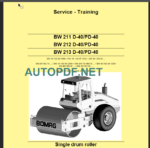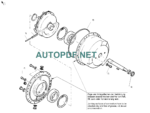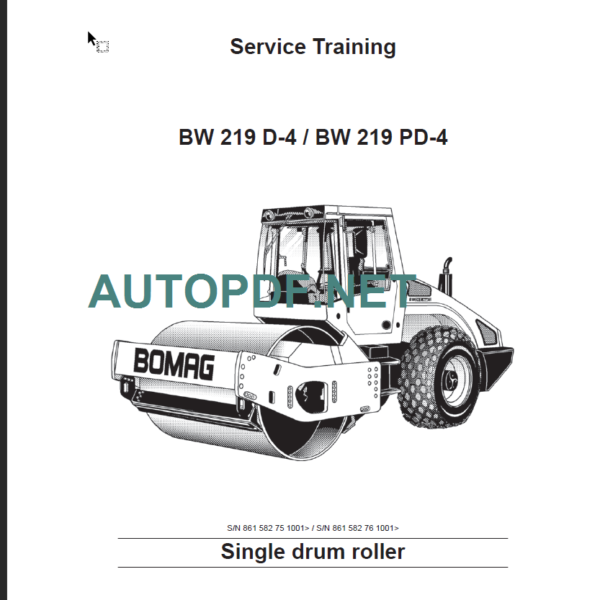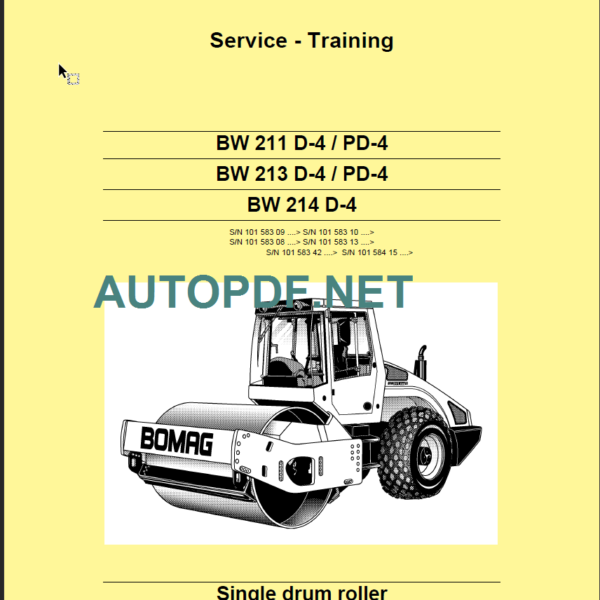









Format: PDF
Serial Number: S/N 101 582 42 1940> / S/N 101 582 47 1053> / S/N 861 583 55 S/N 981 582 14 / S/N 101 582 43 2399> / S/N S/N 101 583 49 / S/N 101 582 48 1239> S/N 901 583 38 / S/N 101 583 50 S/N 101 582 44 1209 / S/N 101 582 49 1019>
Catalogue Number: 008 919 68
Language: EN
Size: 19.42 MB
Pages: 468
Speed Download Link
$40 Original price was: $40.$30Current price is: $30.
Are you eager to expand your knowledge of the BW 213 PD D-40 Service Training and its service requirements? Look no further! In this comprehensive article, we will focus on four crucial aspects of the BW 213 PD D-40: technical data, engine specifications, circuit diagrams, and drum functionality. By delving into these key components, you’ll gain valuable insights to ensure optimal performance and longevity of your machine.
By acquiring comprehensive knowledge of the BW 213 PD D-40 roller, you can optimize its performance, minimize disruptions, and extend its lifespan. Remember to follow the manufacturer’s recommended service intervals and utilize the training available to maximize efficiency and overall productivity.